► Another quickest ever Lotus road car
► This one’s the most powerful Exige yet
► 430bhp, 180mph, 0-62mph 3.3sec, £99,800
You’d be forgiven for feeling a little bit cynical about this car. Because it’s only a matter of weeks since Lotus last released a car it said was its quickest and most powerful road-going model ever – the Evora GT430.
Now here’s another one. The Lotus Exige Cup 430 is the ultimate Exige, and it’s arrived a few months since the last time Lotus released a car billed as the ultimate Exige, the Cup 380.
So what makes this car different?
As the name suggests, it’s had a power hike to 430bhp – an increase of no less than 55bhp versus the Cup 380. Lotus has squeezed the charge-cooled powerplant from the Evora GT430 into the Exige, an engine bay and chassis never originally intended to take that amount of plumbing, or power. That gives this car a power-to-weight ratio of 407bhp-per-tonne – similar to a Lamborghini Aventador.
‘This car is not for the faint of heart,’ says Lotus CEO Jean-Marc Gales. ‘It’s everything Lotus stands for: benchmark handling, benchmark chassis, in a good-looking package.’
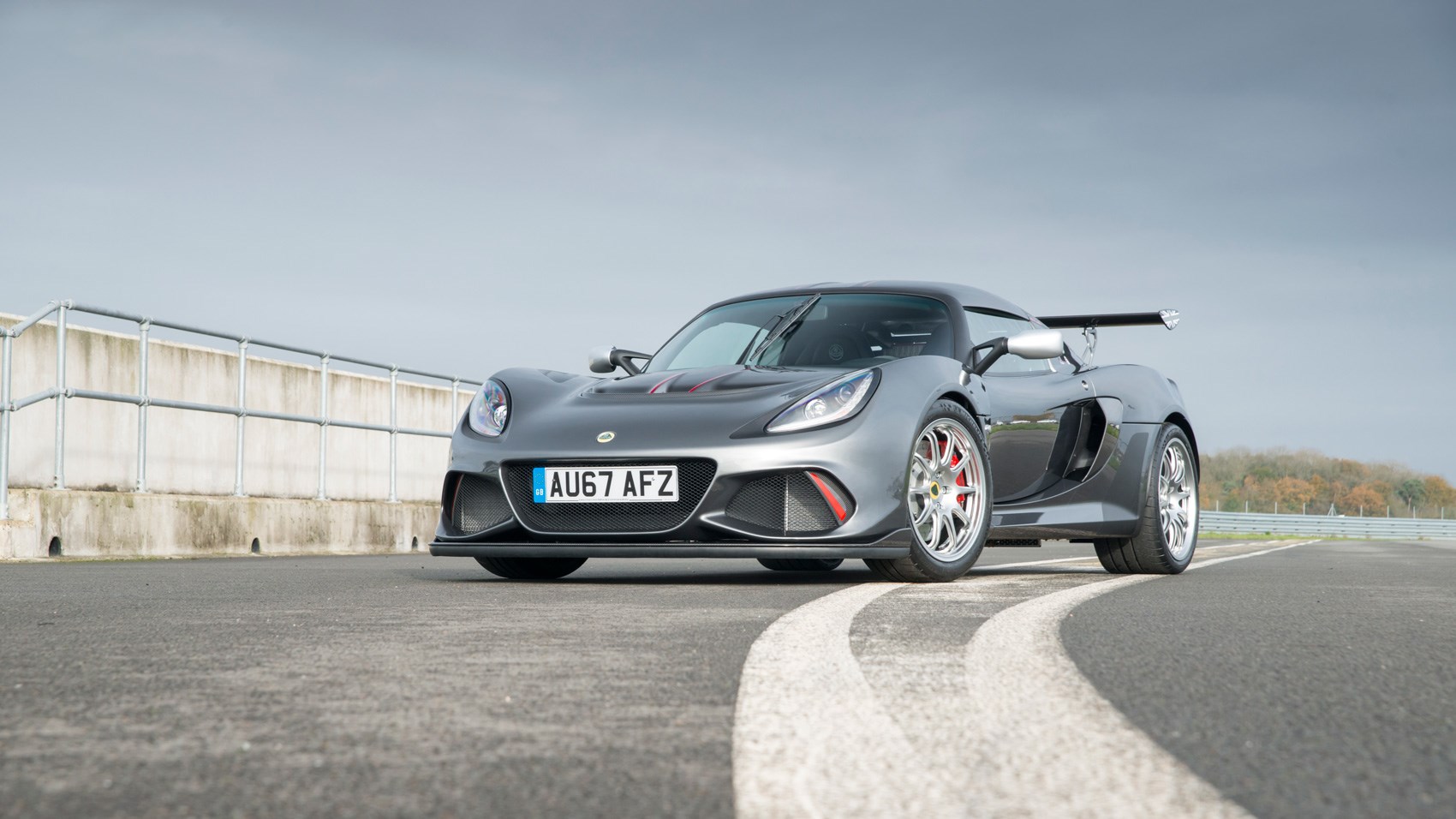
To go with the extra power much of the car’s bodywork has been redesigned for lighter weight and improved aerodynamics, and there are a host of pricey suspension and brake upgrades to match.
The regular Exige Sport 350 and Exige Sport 380 models continue as before, and this new Cup 430 tops the range. It’s fully homologated for Europe and Japan; it’s not an IVA car. While the Cup 380 was limited to 60 cars in Europe, there’s no upper limit on the Cup 430’s production – Lotus will build as many as it can sell, and it says it’s confident it can sell plenty – despite a price tag of £99,800.
(The Sport 350 and Sport 380 Exiges cost £57,200 and £68,500 respectively at the time of writing.)
Won’t the people who bought a Cup 380 be a bit annoyed about this car?
No, says Gales, ‘because they can sell the car now for a higher price than they bought it.’ The Cup 380’s European production run sold out within a month, he says, and at the time of writing Lotus is finishing building the last few Cup 380s to be shipped to Japan.
But will the 380 still hold its value when the rest of the world knows about this car?
‘Yes, the Cup 380 is a good package. This car is a bit more expensive.
‘This is it – there will be no further iteration and after a couple of years, we expect to see its value growing.’
Tell me more about the Lotus Exige Cup 430’s engine
As per the rest of the Exige and Evora range, it’s a 3.5-litre V6 supplied by Toyota. Lotus doesn’t alter the internals, but it changes an awful lot of other bits. The complete induction system, revised cam and injection timings, a baffled sump to cope with the cornering forces, a bigger water pump, and, most significantly the biggest supercharger from the Evora with an air-to-water cooler.
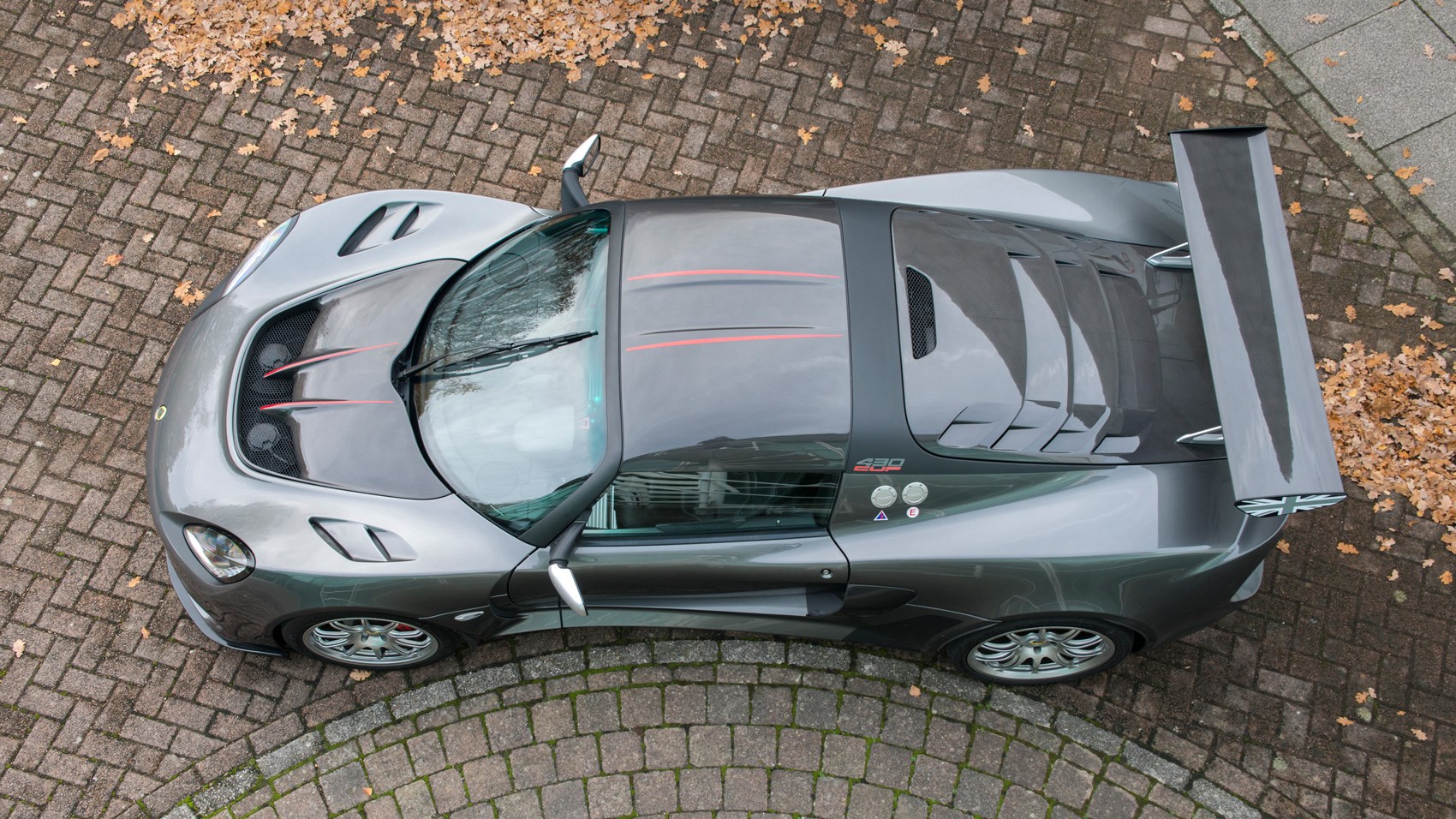
Height-wise, it’s right on the limit in the Exige – the top of the unit just fits beneath the engine cover. This puts the butterfly valve right in the view of the rear mirror, so as you open the throttle you can see it move in tandem with your right foot – a particularly evocative sight during gear changes.
As well as more power there’s improved torque delivery, from lower down in the rev range – 325lb ft from 4000rpm.
Could it develop even more power?
‘The engine yes, but the gearbox no,’ Gales says. ‘The automatic gearbox could take more, but we’ve sold only four automatic Exige 380s before. We won’t offer an automatic with this one. The engine is capable of more power and is reliable, but additional power wouldn’t necessarily give a better lap time.’
The gearbox itself – the six-speed manual with a beautiful exposed linkage – uses the same ratios as before, but since the rev ceiling has shifted higher to 7000rpm thanks to the new intercooler for the supercharger, it can now reach 62mph in second gear, shortening the 0-62 time to 3.3sec.
What about the handling? Can the Elise-based chassis handle all that power?
Easily. Three-way adjustable Nitron dampers have been fitted in place of the Exige 380’s two-way adjustable units. The heavier Evora uses Ohlins dampers, which work extremely well, but the lighter Exige is better suited to the Nitrons, Lotus says – and the dampers themselves are also lighter.
There are 24 clicks of adjustment for rebound and low-speed compression, and 12 for high-speed compression, and Eibach adjustable front and rear anti-roll bars have been fitted too – there’s no end of tinkering you could do.
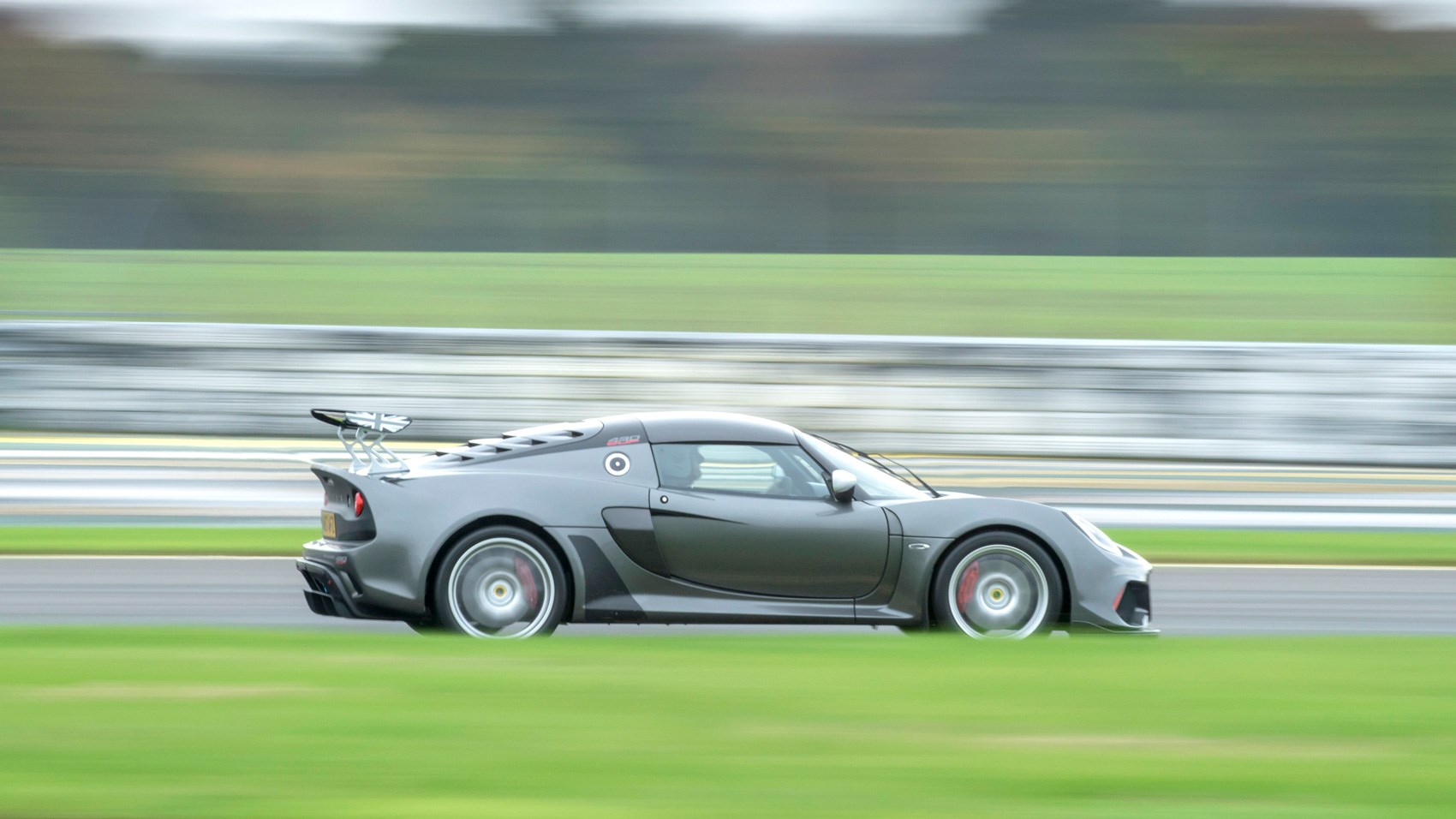
Tyres are Michelin Pilot Sport Cup 2s, same as the 380 Cup. ‘We couldn’t change the tyres’ size – they’re less wide than the Evora GT430, but the car weighs less too,’ says Gales. Camber has been changed slightly at the front versus the 380 Cup.
The brakes have been upgraded to ‘J-hook’ grooved 332mm discs by AP Racing, similar to those fitted to the GT430.
Has the Exige has been on a diet again? I thought it was already about as light as it could get?
The exhaust system is titanium, saving 10kg, an awful lot of carbonfibre inside and out saves another 9kg or so, and the seat runners have been swapped for the same ones as the Evora, saving 1.2kg. Previously the Exige, as per the Elise, has been using the same Mini Metro seat runners for 20 years.
At 1059kg dry, the 430 is 12kg lighter than the 380, despite its extra plumbing, thicker brakes and larger-diameter clutch for the extra torque, which add around 17kg altogether.
It looks a bit different from the 380, but I can’t quite put my finger on what’s changed…
Everything below the headlights at the front has changed, with integrated air curtains in the intake nostrils and a rubber lip under the bumper’s chin to improve downforce. Lotus says it easily clears speed bumps and low kerbs.
Racecar-style louvres have appeared over the front wheels and the rear wing sits an inch higher to fly above turbulence, now carrying smaller endplates to reduce drag. The rear diffuser is now made from aluminium rather than plastic, which actually makes it 1kg lighter.
The 380’s distinctive dive planes have been deleted to reduce drag – ‘the 430 doesn’t need them – the other changes give more downforce,’ Gales explains.
Those various changes bring the dual benefits of increased downforce and reduced drag; Cd has improved from 0.45 to 0.42. There’s now a hefty 220kg of downforce at top speed – which is 180mph.

That downforce is balanced favourably, with 45% activing on the front of the car and 55% over the rear. The 380 Cup, by contrast, was 36:64 front:rear. ‘High speed stability is the best we’ve ever had on an Exige’, says Gales.
Much of the new bodywork is made from carbonfibre: tailgate, bonnet, wings, splitter, airblades, the hardtop – conceivably removable, so you could drive it as a roadster if you’re feeling adventurous, but you’d lose a bit of torsional rigidity – this is a car aimed at customers chasing tenths at trackdays rather than chasing the sun. Or people who’d like to go racing altogether – you can option in the A-frames for a rollcage, fire extinguisher, isolator switch and various other necessities for motorsport if you wish.
What’s it like inside?
A carbon instrument panel saves a whole 200g (‘but 200g are 200g’ says Gales) and there’s more carbon on the wide sills, which are now lower, making ingress a bit easier; egress is still a tricky, inelegant process, but you get used to it.
Ultra-thin carbon seats, trimmed in leather, are the only choice; they weigh only 6kg each. Black is standard, but they’re available in more or less any colour customers ask for as Lotus continues to ramp up its personalisation options.
It’s a bare-bones interior elegant in its minimalism; you can see the bonding on the aluminium chassis in the footwell, but it doesn’t look out of place.
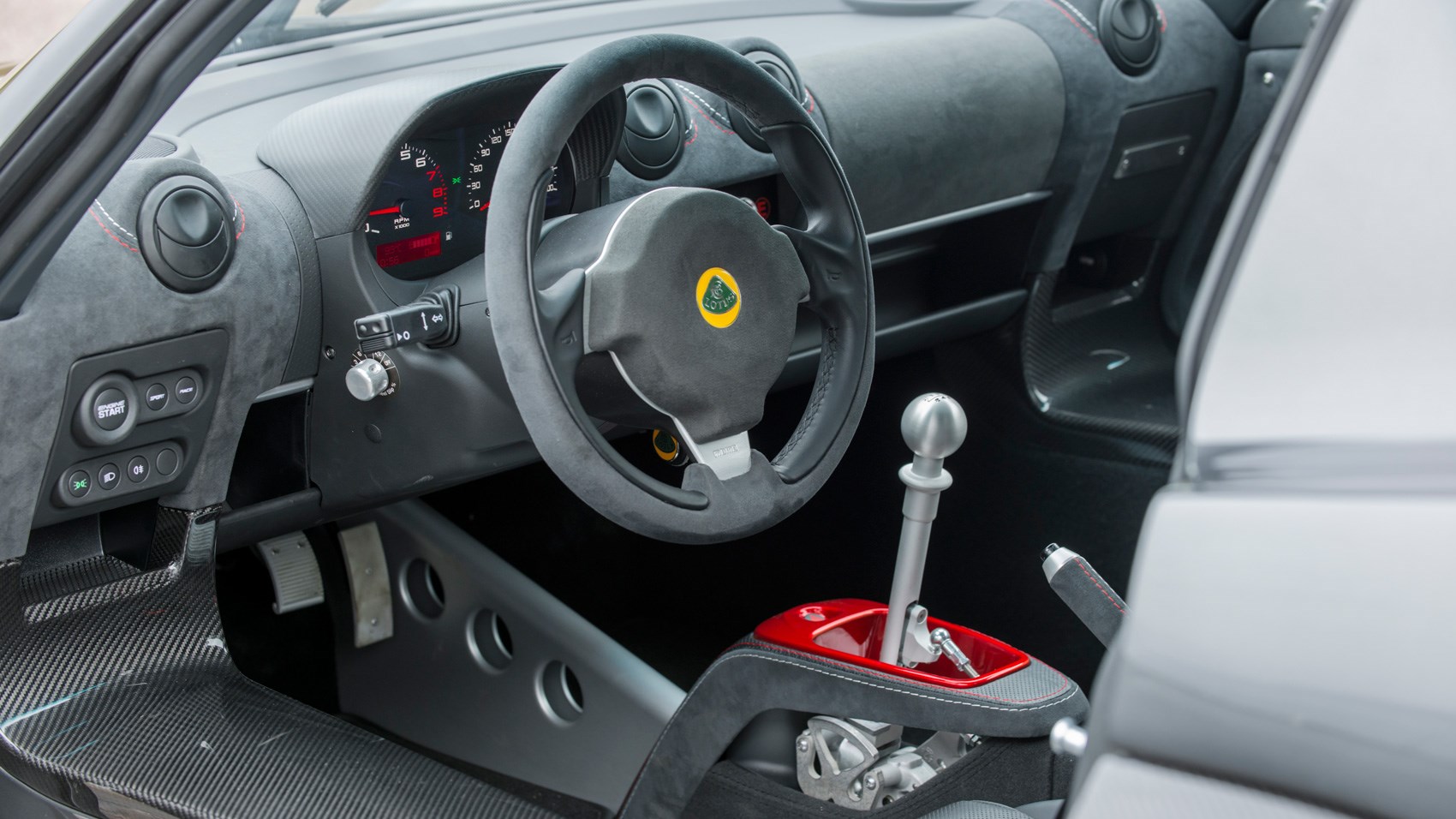
When the optional extras list includes carpets, air-con and a radio, you know this is a serious car. Said stereo is a Bluetooth-enabled Clarion unit, which looks like it’s been pulled straight from an Argos catalogue but does the job well enough.
Also on the options list are cruise control, extra sound insulation and floor mats.
So this is the fastest Lotus road car ever?
In terms of lap time around the company’s Hethel factory test circuit, yes.
It’s 1.2sec quicker than the 3-Eleven road car with a lap time of 1m24.8sec – a new record.
For context:
Evora GT430: 1m25.8
Evora GT4 race car on road tyres: 1m26.0
Exige 380 Cup: 1m26.0
Exige Sport 350: 1m30.5
All times were set by the same driver, Lotus engineer and racing driver Gavan Kershaw.
Top speed is 180mph, compared with 196mph for the Evora GT430 Sport.
So the quickest Lotus road car ever rather than fastest ever is probably the way to think of it. To be 5.7sec quicker than the Exige Sport 350 it’s based on, itself one very Not Slow car, is no mean feat.
Let me guess – it’s pretty good to drive?
Let’s start on the track, in the rain. It’s every bit as good to drive on the Hethel test track as you’d expect, even more nimble and confidence-inspiring than the Evora GT430.
Brake feel through the pedal is incredibly precise, enabling you to hold the brakes at the point of locking in the wet, and modulate the pressure accordingly. Few road cars enable that degree of control.
There’s much less pitch under braking than the GT430, and despite the Exige being set up in its slightly softer default road settings in deference to the wet weather, you can feel its extra nimbleness over the Evora thanks to its lower centre of gravity and kerb weight.
You really can feel the downforce at work, particularly in the fast sweepers leading up to the scarily quick Windsock corner. The car’s inherent stability gives you plenty of confidence, even in the wet.
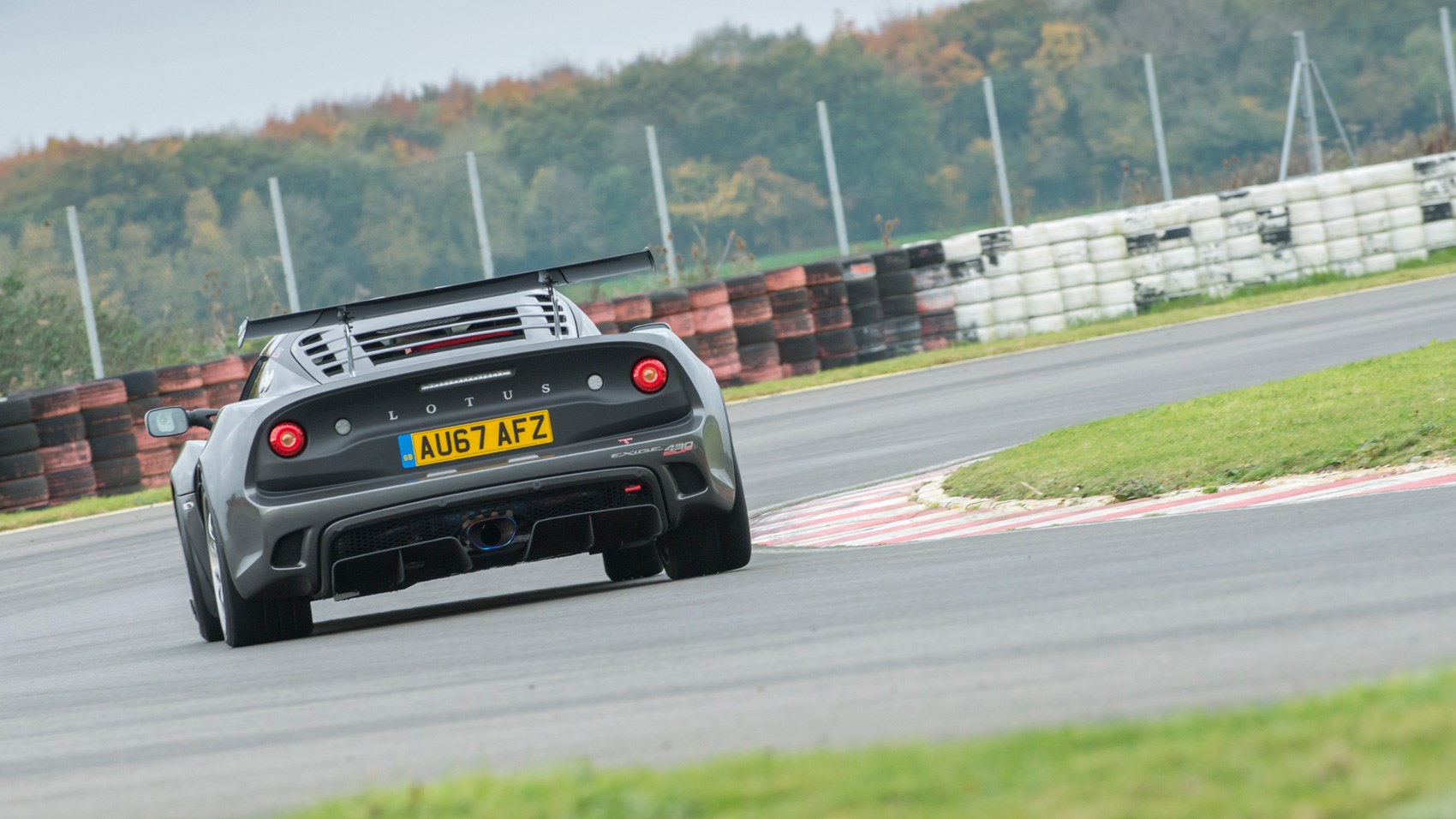
And the sound… I’ve now driven a few Lotuses with this engine and titanium exhaust combination, but this is the best-sounding yet. It really shrieks, in a good way. And the more you use it, the deeper the shade of blue the exhaust turns.
On the cool-down lap with the windows down, it echoes back off the Armco on the back straight and fills the cabin. Back at reception, the Lotus press team tell me they could hear it on the breeze, saying it sounded like Classic Team Lotus were out there testing a Type 72.
Like the Evora GT430, the Exige Cup 430 features a six-stage traction control system developed from Lotus’s British GT championship Evora racing car.
As with the standard Exige, there’s an ESP system to look after you in normal driving, and it’s extremely safe. Sport mode relaxes it, and Race mode turns it off. Once in Race, a machined aluminium nub on the steering column enables you to flick between six levels of traction control intervention, based on wheel slip: 1% (almost fully on), 3%, 6%, 9%, 12% (practically switched off), and fully off.
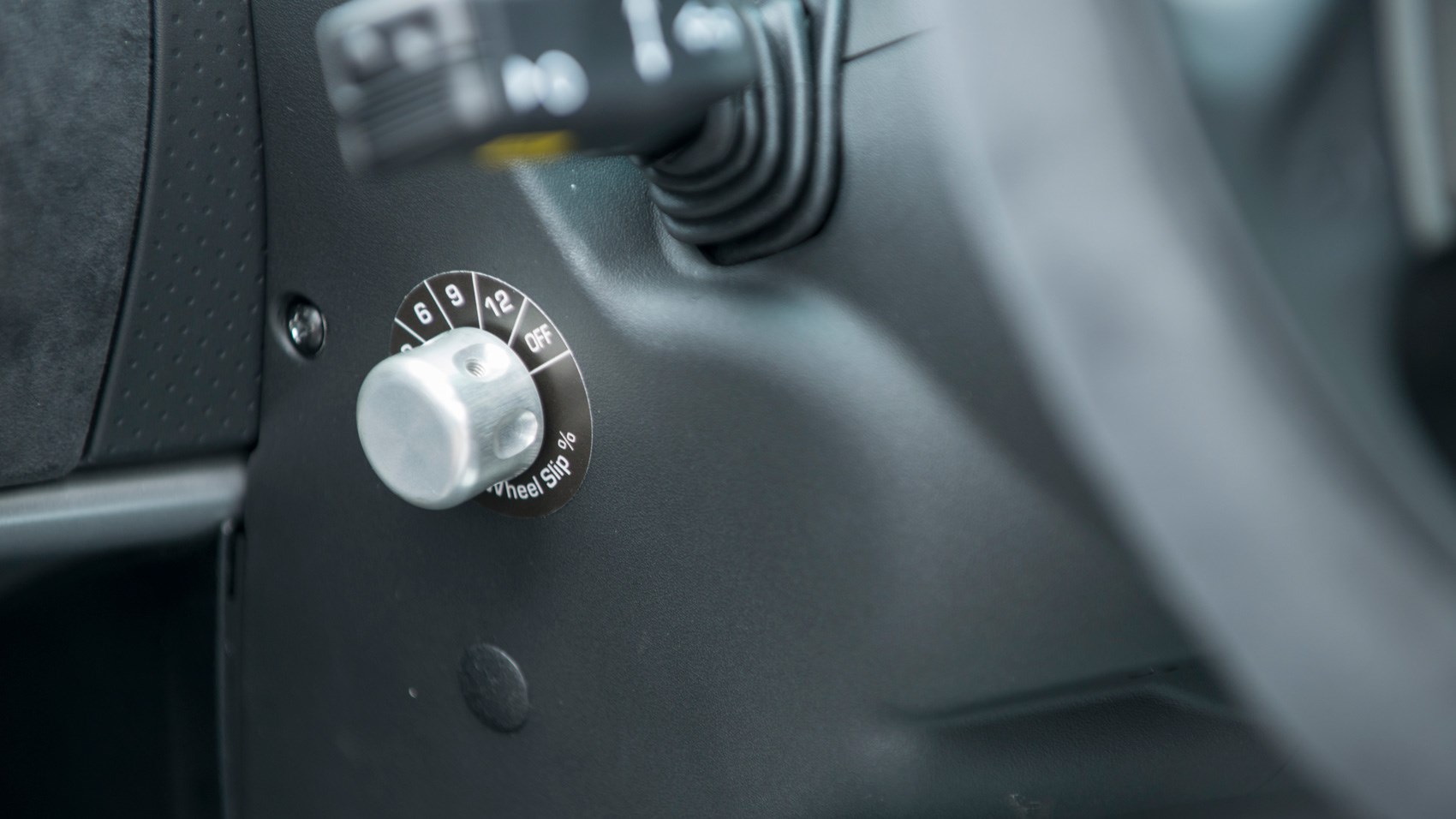
Like the rest of the Exige range, the Cup 430 doesn’t have a limited-slip diff. ‘To fit one would have taken another year to adapt the Bosch ESP,’ Gales says. ‘The traction control and downforce compensate.’
When I drove the Exige Sport 380 at Hethel it spun its inside rear wheel exiting the tight chicane, but the Cup 430 doesn’t – a function of the improved damping and wider tyres. There’s plenty of traction, and you don’t miss the lack of a locking diff.
Postscript: We’ve since tested a Cup 430 in a stiffer set-up in the dry on a different circuit, and it did suffer more from inside wheel spin on corner exit, especially with the traction control switched off.
And on the road?
As you’d expect the ride is firm, but it’s still very much liveable with. You don’t wince when you approach big bumps in the road, and it still flows over rippled B-roads in a Lotus-like way.
The Exige’s unassisted steering is still great, the steering wheel just the right size to roll your wrists into corners. The front tyres follow cambers a little, but it’s not unruly.
There’s plenty of road noise as you’d expect, particularly on coarse-surfaced dual-carriageways. I drove another car with carpets and sound insulation, and that was easier going – you could carry out a conversation with a passenger without raising your voice.
The main impression is the sense of occasion; the wriggly, precise steering, the bowl-shaped screen with a central wiper like a racing car, the wail from the exhaust system when you clear 4500rpm or so; it’s as evocative a car to drive at low speeds on the road as it is at high speeds on the track.
That said, you’d experience much of those same thrills and feedback from the £42k-cheaper Exige Sport 350.
Verdict
There are two ways to look at this car.
Over the past few months there have been so many lighter and faster Exige/Evora/Elise model variants, each with a different set of numbers after their names, that we’ve become almost snow-blind to them. On the one hand, it’s easy to view this latest one as little more than expensively-priced filler – a headline-filling stop-gap until the next generation of Lotus models arrive in 2020, starting with a new Elise (and subsequently, a new Exige). The company has recently come under Geely ownership, which brings new investment, new component-sharing opportunities and a refreshed air of impetus for future product. Fun as this car is, the more interesting, relevant new Lotus models will bear fruit a little further down the line from now.
The other way is to celebrate this car for what it is: the fastest, most extreme Exige there’s ever been (and, Gales says, will be, at least for another 18 months). It’s the most exciting Lotus I’ve ever driven, and one of the best handling road cars I’ve experienced. It’s a huge amount of money but a huge amount of fun too. A sum of incremental gains it might be, but they’ve added up to a seriously impressive car.